Humpback Whales Frolic in 3D Dome Experience at Maui Ocean Center
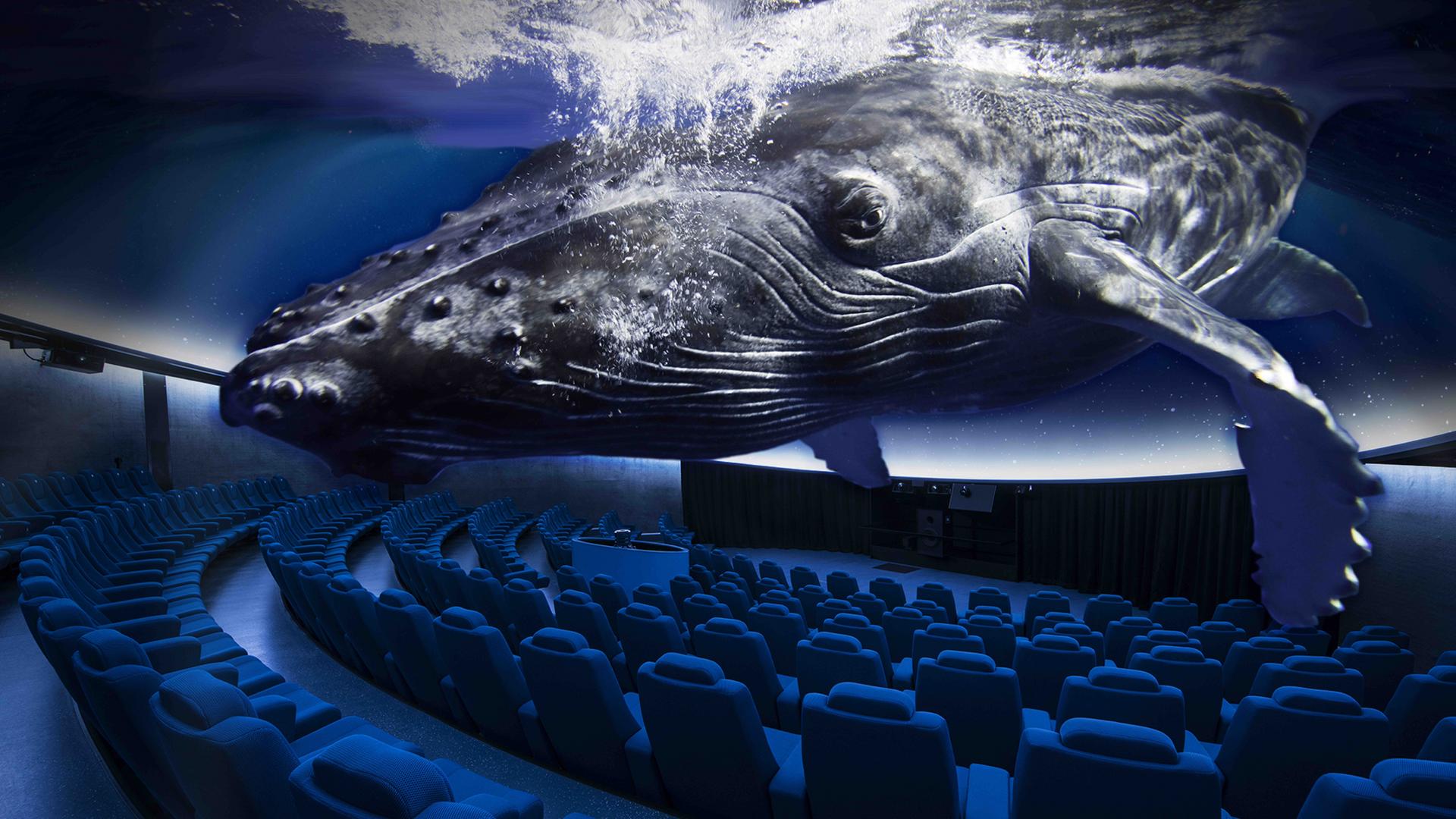
Humpback whales grow to 60 feet in length and 80,000 pounds, and in the Humpbacks of Hawaii Sphere and Exhibit they look as large as life.
The Maui Ocean Center—one of the top ten aquariums in the world—chose a Monolithic Dome for its 3D “Humpbacks of Hawaii Exhibit and Sphere” experience, bringing visitors eye to eye with these denizens of the deep.
“We want to inspire people to experience the beauty of the ocean, to fully see this beauty and learn to love and open with compassion to the creatures of the ocean,” said Tapani Vuori, general manager, who has devoted more than twenty years of his career to the center. “As Sylvia Earle said, oceans are doomed if we disconnect the need for beauty under the ocean surface and use it only as a place of resources for ourselves, and a dumping ground. We needed to create an experience allowing all to go under the waves with the whales.”
As the humpback whales leap and frolic, the audience responds with gasps of wonder. The whales sing to each other, and the 3D imagery feels so real that children in the audience often reach out to touch them. Construction of the spheroid began in 2017, and more than a million visitors of all ages have shared the experience since it opened in 2019.
“Once, a mother and young boy were on the floor in front of the room, and I wondered why they chose that spot. After we got out from the sphere, the mother came to me in tears. She said it was the first time her son had vocalized to her very effectively,” Vuori said. “He had experienced those whales, and it had unlocked his capacity to communicate with her about something deeply felt for him.”
Such miracles emerged after exquisite planning, and the Sphere’s effectiveness has exceeded even Vuori’s far-reaching dreams. Vuori took inspiration from the Hawaiian creation chant of Kumulipo (Beginning in Deep Darkness), as translated by Queen Liliuoklani, respecting the belief that whatever happens on the land impacts the ocean, and we are all connected.

The Monolithic Dome can be seen from far away on the ocean, and sailors can use the bright white dome as a marker to show that they’re almost home.
To design the Sphere, the Maui Ocean Center enlisted the expertise of Fabrizio Medosi, president of Pacific Atelier International, whose company had designed the Maui Ocean Center twenty years previously. Medosi immediately grappled with the technical challenges endemic to placing the sphere amidst existing buildings. The initial plans called for a shell on the inside, with the application of the foam spray insulation on the exterior, but Medosi adapted the plans to suit the particular situation of the Center.
“Spray foam insulation can be toxic, and it’s very windy in Maui all year long,” Medosi said. “We were upwind of the aquarium, and toxicity would be disastrous. We reversed the process, doing all we could from the inside, and it worked out really well.”

Step by step, the Monolithic Dome formed on Maui. First came the inflated Airform membrane. Then, inside the inflated membrane, the scaffolding was set up on the rotating scaffold base. Next, workers attached steel rebar to the applied polyurethane foam, and then finished the concrete shell.
Vuori said that while the concrete was being applied, the interior seemed like a fiercely surrealistic scene. Medosi explained that the application significantly reduced the need for moving scaffolding, bringing it down and up to various parts of the structure. Instead, scaffolding had a pivot at the middle of the sphere, and concrete could be shot all the way around the structure from that single point. The membrane took no more than twelve hours to inflate and be ready for application of the polyurethane foam, rebar, and shotcrete.
“It was so simple,” Medosi said. “It was fantastic and solved a lot of problems that could arise with wood construction, and made life so much easier in many ways, even for design.”
The cost of building in Maui typically runs to $1200 a square foot, but the simplicity and efficiency of the Monolithic Dome construction resulted in a cost of only $600 a square foot, Vuori said.
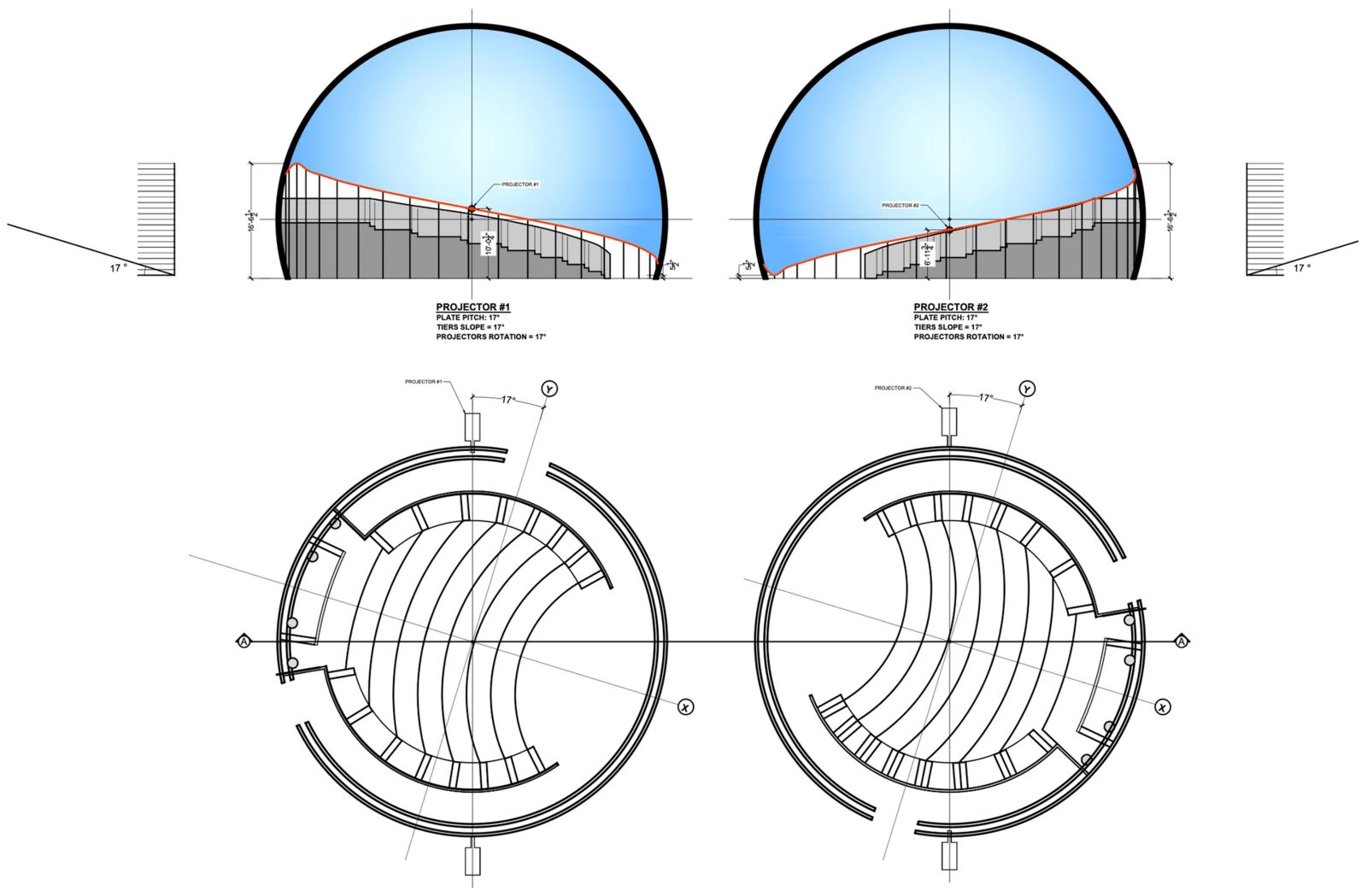
Fabrizio Medosi, architect, noted, “In the drawing, the two sections are cut normal (perpendicular) to each of the two projectors: the projection horizon is tilted 17 degrees, following the gradient of the tiered seating/the slope of the solid balustrade on either side of the steps.”
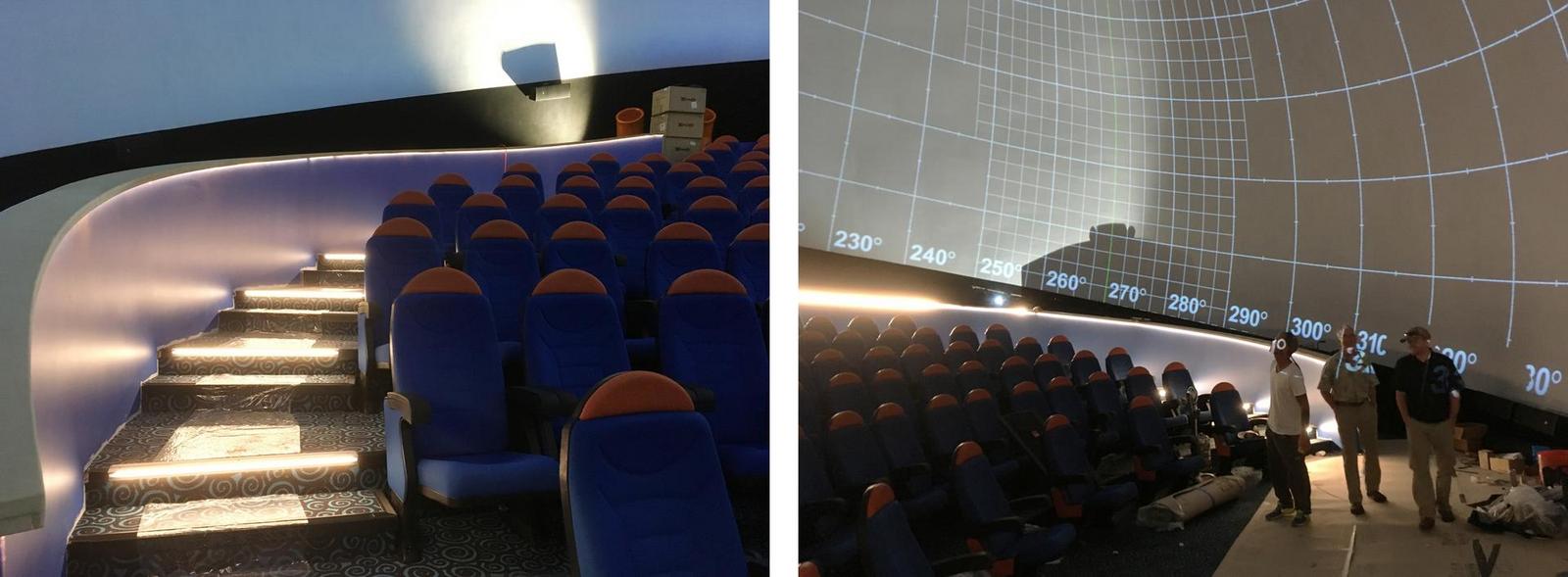
The strong light coming from the left in the first photo is cast by a temporary flood light used during construction while the grid is actually being projected during calibration of the projectors, said Fabrizio Medosi, architect. In the second photo, the top of the balustrade is just below the tilted horizon seen right behind it on the wall.
Medosi said that he likes a challenge, and carefully considered how to maximize the aesthetics and functionality of the structure. Instead of cutting the dome—or spheroid—across the center at what would be its equator, he opted to cut the spheroid eight feet below the equator. This decision resolved aesthetic, technical, and functional issues.
“It gives the structure a lift, a lightness of being (like the Haydar Khana Mosque or the Taj Mahal), rather than looking squat and heavy if cut at the equator,” Medosi said. “It affords full use of the floor with the wall curving away at the base and curving back just above people’s heads (about eight feet); and it allows for the tilting of the horizon cast by the 180 degree by 360 degree projection so that the bottom of the projected image is about six inches above the floor at the lowest in front of the spectators and sixteen feet, six inches at the back, at the highest.”
Filmmaker Daniel Opitz of Ocean Mind shot the footage of the humpback whales in the ocean around Maui during two seasons. The Hawaiian Islands Humpback Whale National Marine Sanctuary protects more than 21,000 humpbacks around Maui, Kauai, O'ahu, and the Kona and Kohala coasts of Hawaii. Optiz digitized footage for a 360 degree experience, projected by an Evans & Sutherland Digistar 6 projector. The 118 seats are designed so that no shadows will interfere in any way with anyone’s experience. The need to create the most lifelike, immersive 3D experience possible included elimination of all human shadows from the sphere.
“Like everything in life, if it looks easy it’s because a lot of thinking went into it,” Medosi said.
Pacific Atelier International maintains a strong commitment to optimal aesthetics, and a challenge arose with placement of exterior fire doors. Instead of having them extend outwardly, disrupting the smooth, rounded surface of the spheroid, Medosi opted to recess the fire doors, to maintain beauty while respecting functionality.
Vuori emphasized that the building’s energy efficiency coincides with the Maui Ocean Center’s determination to protect earth’s resources. The Monolithic Dome also can withstand the winds.
“It is the safest building on Maui,” he said.
Vuori took careful note of the community’s opinions throughout design and development. Early on, the Maui Ocean Center had the opportunity to utilize a 65-foot humpback whale skeleton, but they met with a stakeholders cultural group, and elders Vernon and Foster explained that having a skeleton of a whale would be like putting ancestors’ bones on display. The Hawaiian word for whale, kohola, also indicates the connection to the reef itself, and whales are respected as spiritual protectors to certain families, Vuori said. Instead of including the skeleton of a whale, the exhibit itself became symbolic of the whale, with arches carved from fragrant sandalwood and even representative barnacles on the exterior. The experience will soon have narration in Hawaiian language.
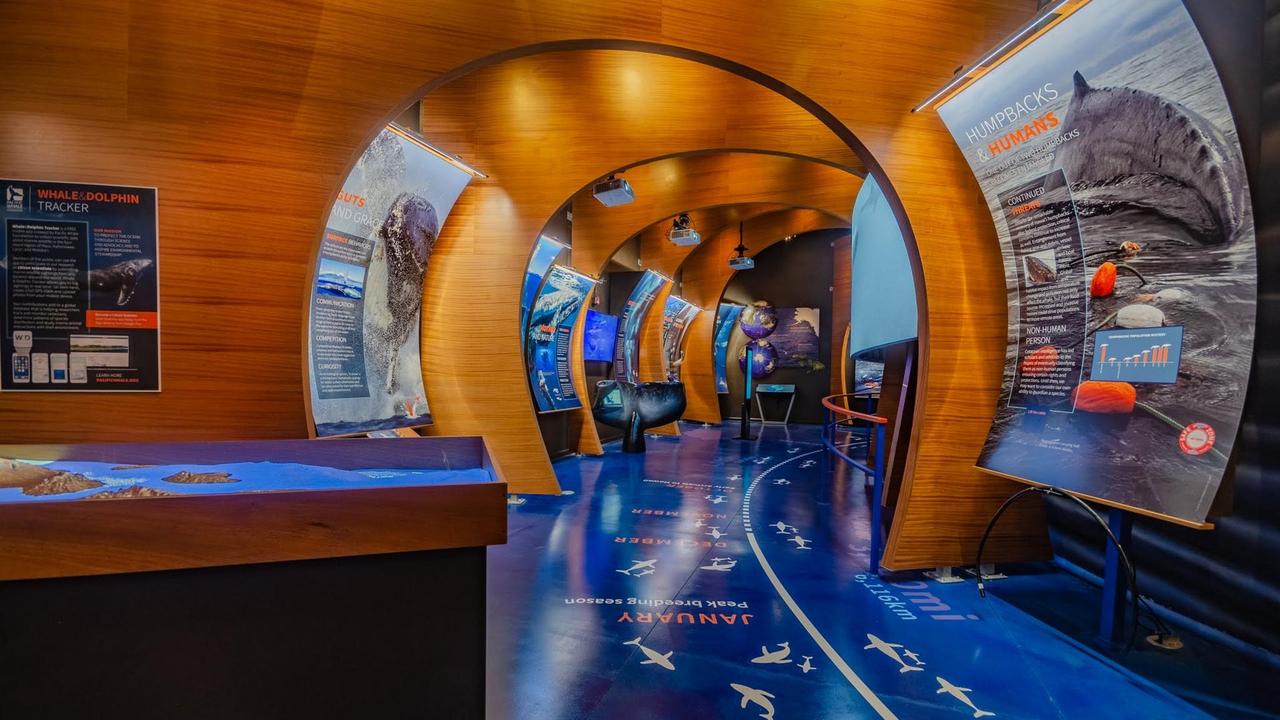
Walking through the Humpbacks of Hawaii Exhibit and Sphere may be as close as most visitors ever get to being in the belly of a whale, as it’s designed to replicate the size and shape of a humpback whale. On the floor, visitors can see and follow the migration route of these whales.
Mike Morris, communications specialist, shared that the Humpbacks of Hawaii Exhibit and Sphere joins numerous exhibits. The Maui Ocean Center Marine Institute, a 501c3 sister organization, has a mission “to inspire lifelong environmental stewardship and ensure the survival of coral reefs and sea turtles in Hawaii through science-based conservation efforts, education, and outreach.” The Turtle Lagoon Exhibit features Hawaiian green sea turtles (honu). They raise the turtles from Sea Life Park in Oahu for two years.
“Our cultural director is Dane Maxwell, the grandson of Uncle Charlie, who did the work when we first opened 25 to 27 years ago,” Vuori said. “He recites an oli, and then we release them into the ocean.”
The Living Reef features 40 coral species, receiving saltwater from the bay. Visitors also can explore an open ocean tank with a 47-foot-long tunnel through the center, allowing for a deeply personal perspective. Community groups meet, without charge, at the Monolithic Dome, and another 3D experience still under wraps has entered the planning stages.
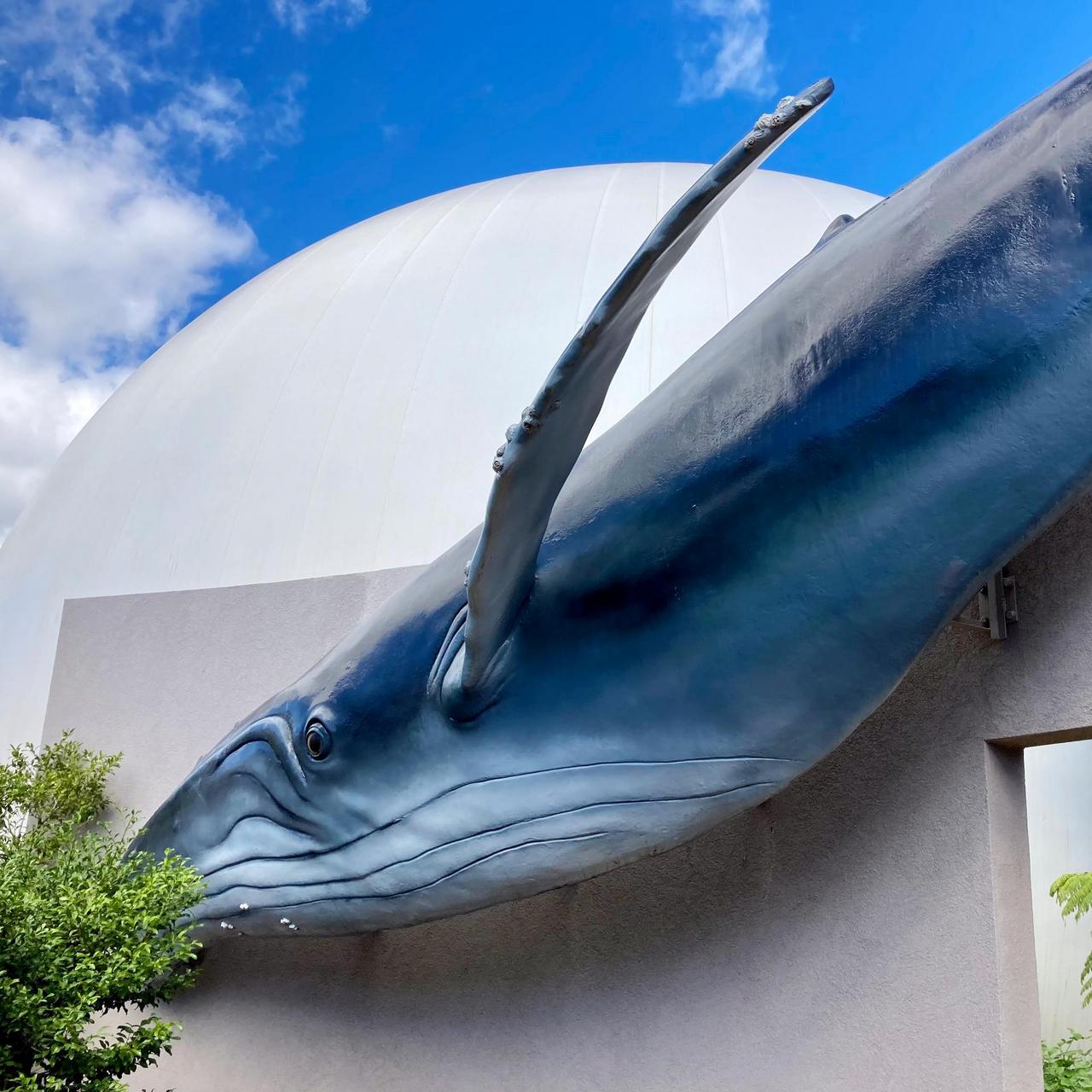
Humpback whales are known for being protective of each other and communicating with enchanting songs. Their songs can resound for hours in the oceans, traveling for miles. To the human ear, the sounds can feel like shrieks, cries, howls, grunts, and moans.
The 3D experience of Humpbacks of Hawaii Exhibit and Sphere has been called so realistic that visitors find themselves dodging the whales’ flukes, Morris shared. Adult humpback whales weigh 35 tons and are 38 to 52 feet in length, and the experience allows visitors to feel their enormity and grace. In 1970, humpback whales went on the Endangered Species list, but their number has grown from 15,000 to 80,000, and in 2022, the humpback whales were removed from the list. Exhibits that increase empathy for other species can help save them, Vuori said.
“We offer a viewpoint beyond aesthetics, beyond form following function,” Vuori said. “We have a perfect medium for this important holistic storytelling. People are blown away by the experience, and many of them cry. We take our responsibility as stewards of land and ocean seriously. It is our responsibility, and the responsibility we leave as legacy to our grandchildren.”
More information on visiting the Aquarium of Hawaii can be found at mauioceancenter.com or call +1 (808) 270-7000.
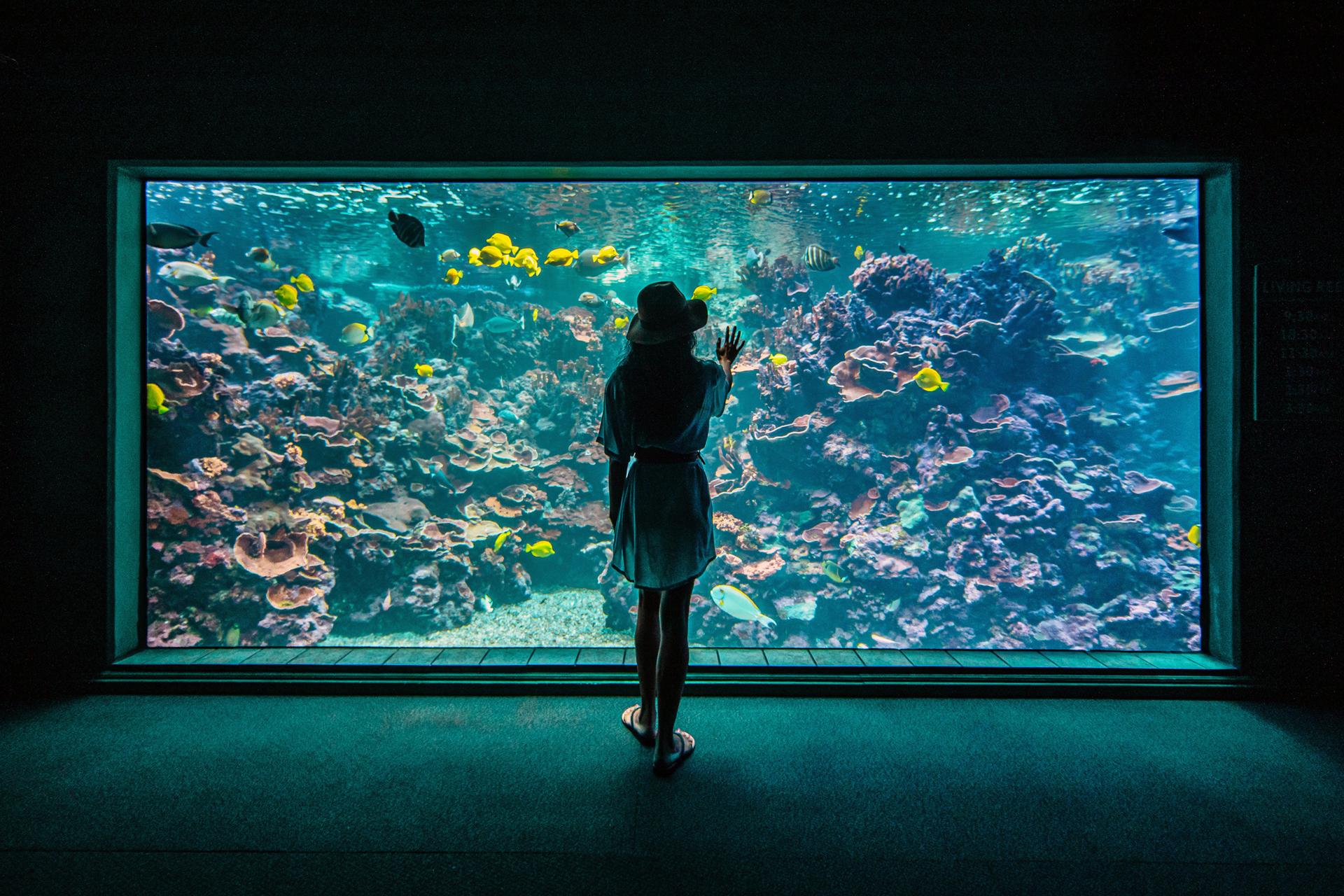
The coral propagation and transplantation techniques at Maui Ocean Center’s Aquarium Lab have saved hundreds of live Pacific corals from destruction, working with Hawaii’s Department of Land and Natural Resources Division of Boating and Ocean Recreation, Division of Aquatic Resources, and National Oceanic and Atmospheric Association. The Aquarium exhibits show marine life found in the ocean around Hawaii.